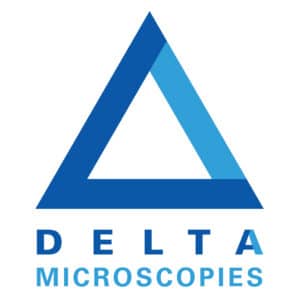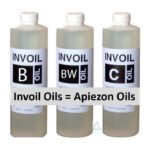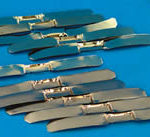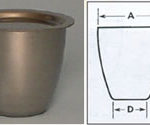Description
Benefits
Has anti-seize properties, making it an effective protector and lubricant in ultra-high vacuums
Exhibits extremely high levels of lubricity
Demonstrates an extremely low vapor pressure of 7 x 10-11 Torr at 20°C
Recommended for use at ambient temperatures
Does not suffer from contamination problems associated with silicone based greases such as “creep” or “carry over”
Easy to clean and remove using hot water and an aqueous glassware detergent, hydrocarbon or chlorinated solvents
Applications
The unique properties of Apiezon AP100 lubricating vacuum grease mean it is frequently used to protect stepping motors and gearboxes from corrosion and abrasion, particularly when they are subjected to high load conditions. AP100 is also used to prevent seizure in stopcocks, taps and small metal fastenings.
The creep resistance of Apiezon AP100 benefits scientific and semiconductor users alike. AP100 helps to increase the accuracy of analytical techniques and improve yields in semiconductor manufacture by contamination avoidance. In addition, AP100 is used for surface coating applications where silicone contamination can lead to poor surface adhesion and incomplete coating defects.
Excellent lubricants
High purity, low vapor pressure – non-contamination in analysis
The working temperature range of each grease is dependent on the grade that is used
Easily applied, easily cleaned off
Silicone free. This benefits scientific users because the risk of sample contamination and consequently the risk of interference in analytical techniques such as infra-red or mass spctrometry, etc. is avoided
Approved by NASA and NATO
| Typical Property | AP101 | AP100 | H | L | M | N | T |
| Main area of application | General | Lubricating | Cryogenic | High Temp | High Vacuum | General Vacuum | Medium Temp |
| Melting Point: °C ASTM.D 566 °F |
|
42-52 108-126 |
does not melt | 42-52 108-126 |
40-60 104-140 |
42-52 108-126 |
112-137 233-278 |
| Working temp. range | -40-180 -40-365 |
10-30 50-86 |
-10-240 14-464 |
10-30 50-86 |
10-30 50-86 |
-269-30 -452-86 |
10-120 50-248 |
| Vapor Pressure Torr @20°C |
<1.0×10-5 | 7.0×10-11 | 1.7×10-9 | 7×10-11 | 1.7×10-9 | 6×10-10 | 4.6×10-9 |
| Relative Density 20°C | 0.981 | 1.042 | 0.918 | 0.896 | 0.894 | 0.911 | 0.912 |
| Radiation Resistance | No | No | No | Yes | Yes | No | No |
| Outgassing Characteristics TML ASTMS .E CVCM 595-90 |
/ / |
<1.0% <0.1% |
<1.0% <0.1% |
/ / |
<1.0% <0.1% |
/ / |
/ / |
| Lubricity 4 Ball Test ASTM .D 2763 (IP 239), Kg |
450 | 450 | 250 | 150 | 140 | 150 | / |
| Viscosity of molten grease, cP |
50°C 100°C |
/ / |
/ / |
/ / |
766 62.3 |
413 29.8 |
|
| Coefficient of expansion per °C over 20°C-30°C |
0.00066 | / | / | 0.00076 | 0.00075 | 0.00072 | 0.00073 |
| Thermal conductivity, w/m°C |
/ / |
/ / |
/ / |
0.216 / |
0.194 / |
0.194 0.095 |
/ / |
| Latent heat of fusion, cal/g |
/ | / | / | 15.1 | 18.7 | 15.0 | / |
| Fusion Peak °C | / | / | 25 | 32 | 34 | 31 | * |
| Vol. resistivity, cm | / | / | / | 1.2×1016 | 2.6×1016 | 2.0×1016 | 3.3×1016 |
| Permittivity | / | / | / | 2.3 | 2.1 | 2.3 | 2.3 |
| Loss tangent | / | / | / | <0.0001 | <0.0001 | <0.0001 | <0.0001 |
| Surface breakdown at flash over, kV |
/ | / | / | 24 | 28 | 27 | 24 |
| Electric strength, V | / | / | / | 730 | 850 | 820 | 730 |
* Too close to room temperature to measure.









Reviews
There are no reviews yet.